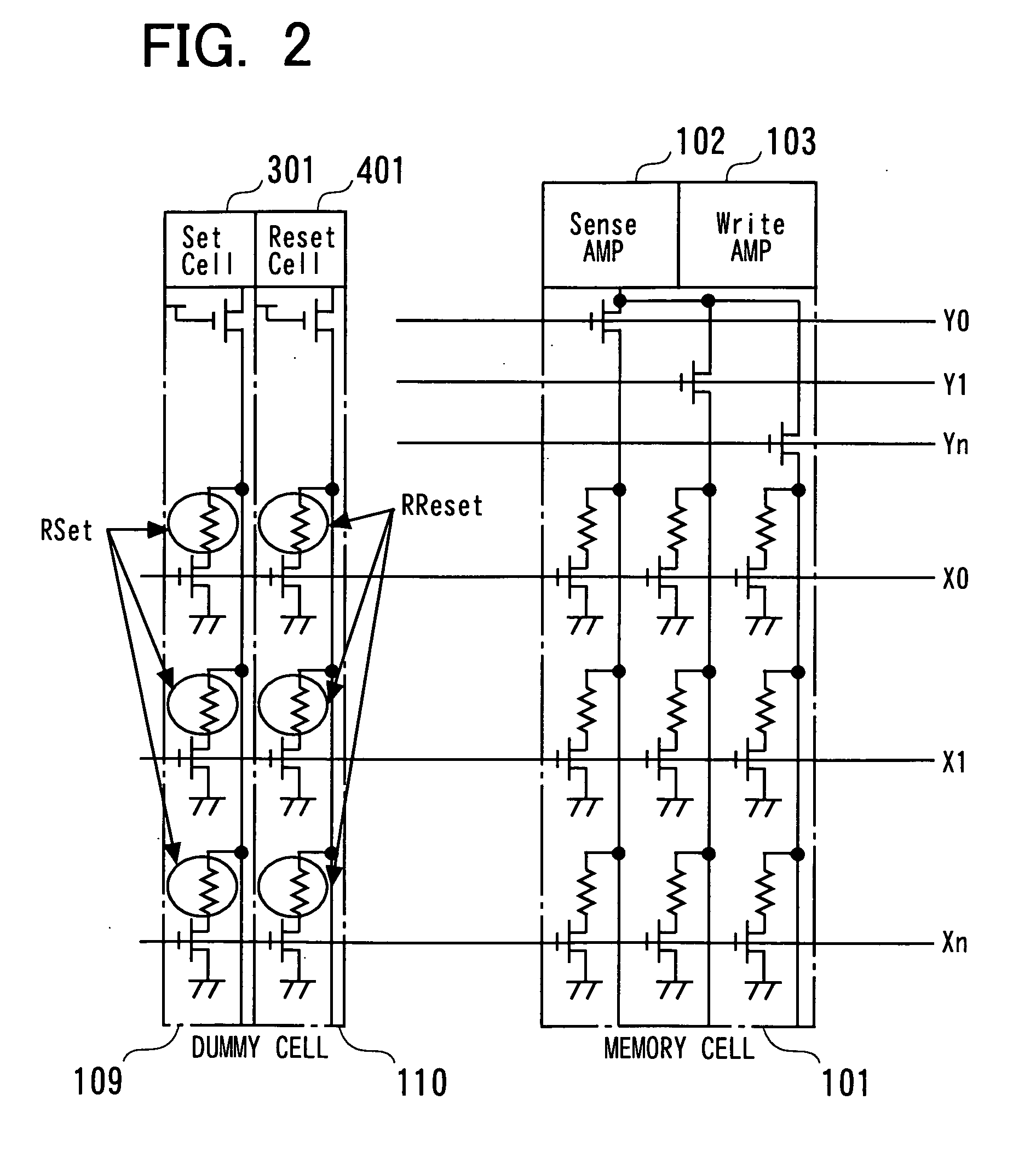Memory device
a memory device and memory technology, applied in the field of memory, can solve the problems of low resistance state, deterioration of device characteristics, and sometimes destruction of stored data, and achieve the effect of improving retention characteristics
- Summary
- Abstract
- Description
- Claims
- Application Information
AI Technical Summary
Benefits of technology
Problems solved by technology
Method used
Image
Examples
Embodiment Construction
[0061] Preferred embodiments of the present invention will now be described. The memory device according to a mode for practicing the present invention includes a reference cell, stressed in accordance with the number of times of the phase change memory cell, and means for detecting a change in the resistance value of the phase change devices constituting the reference cell and issuing a refresh request to an internal circuit in case the resistance value has been changed beyond the set reference value (specifically, to a low resistance value), thereby improving data retention characteristic.
[0062] Preferred embodiments of the present invention will be described with reference to the drawings. Referring to FIG. 1, a memory according to an embodiment of the present invention includes a memory cell 101, a sense amplifier 102 for sensing and amplifying data written in the memory cell 101, a write amplifier 103 for writing data in the memory cell 101, a data register 105 for retreating ...
PUM
 Login to View More
Login to View More Abstract
Description
Claims
Application Information
 Login to View More
Login to View More - R&D
- Intellectual Property
- Life Sciences
- Materials
- Tech Scout
- Unparalleled Data Quality
- Higher Quality Content
- 60% Fewer Hallucinations
Browse by: Latest US Patents, China's latest patents, Technical Efficacy Thesaurus, Application Domain, Technology Topic, Popular Technical Reports.
© 2025 PatSnap. All rights reserved.Legal|Privacy policy|Modern Slavery Act Transparency Statement|Sitemap|About US| Contact US: help@patsnap.com



